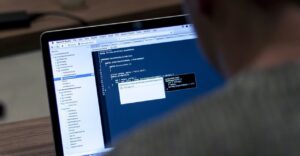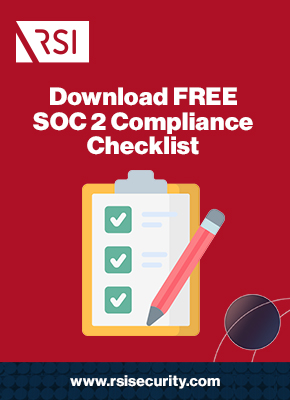All service organizations thrive on providing customers with security assurance across all information technology infrastructure and deliveries—especially regarding clients’ data. This is why the American Institute of Certified Public Accountants (AICPA) has developed audit protocols for assessing security and assuring trust in service organizations. The most widely applicable of these is SOC 2 reporting.
A Beginner’s Guide to the SOC 2 Certification Process
At present, there are no legal requirements mandating SOC 2 compliance. However, industry norms and client demands are significant reasons many companies opt to conduct SOC 2 audits.
There are three considerations for companies curious about the SOC 2 certification process:
- On average, how long does it take to get SOC 2 compliance?
- What is different about the SOC 2 Type 2 certification process?
- How can companies achieve and maintain SOC 2 compliance?
With a basic understanding of SOC Levels and Types, any organization can begin preparing for the Report audit process.
About How Long Does it Take to Get SOC 2 Compliance?
Generating a SOC 2 Report will generally take somewhere between six months to a year for most companies. In particular, SOC 2 Type 1 Reports can take up to six months, whereas SOC 2 Type 2 Reports will typically take at least six months and will often last an entire year or longer.
Many factors affect these durations, causing a wide variance from company to company.
For instance, companies with more extensive and diverse IT and cybersecurity infrastructures will likely require longer timelines when completing the audit process necessary for a SOC Report. Additionally, the number, kind, and location of users respective to the company (i.e., on-premise or remote personnel) will impact the audit’s assessment scope.
However, the primary factor determining how long the complete SOC 2 process will take is the Type of SOC 2 Report selected by your organization.
Request a Free Consultation
SOC 2 Type 1 and SOC 2 Type 2 Certification Processes
One of the most significant differences between the SOC Reports companies can generate lies between the two Types. Most distinctions between the two are directly related to SOC audit duration:
- SOC Type 1 – A snapshot of the target company’s security systems and configurations, as designed, including appropriateness of controls for desired outcomes, at a given date.
- SOC Type 2 – A long-term analysis of the target company’s overall security program, including the design and execution of all security safeguards over an extended period.
For companies seeking the most impactful insights, SOC 2 Type 2 Reports can provide optimal assurance to current and future clients that their data is safe with you. Therefore, we recommend attaining Type 2 certification in the long run. Organizations can evaluate their ongoing Type 2 preparations by conducting periodic Type 1 audits.

Distinctions Between SOC Types and Levels
The Types are not to be mistaken for SOC levels—as in SOC 1, SOC 2, and SOC 3.
The levels refer to broader concerns, such as the audited organization’s business activity. A SOC 1 Report applies to only financial service organizations, whereas SOC 2 and SOC 3 Reports apply to other service organizations, such as SaaS providers.
The levels also differ depending on the intended report audience. SOC 2 is intended for a technical audience (i.e., other auditors), and SOC 3 for public release.
How Can You Achieve and Maintain SOC 2 Compliance?
Both SOC Type 1 and SOC Type 2 Reports (alongside SOC 3) measure a company’s security through the lens of AICPA’s Trust Services Criteria (TSC). There are five major TSC categories:
- Security – Measuring how well a company safeguards all sensitive systems against unauthorized access, which could compromise all other TSC categories and criteria.
- Availability – Measuring the extent to which companies facilitate access to systems needed by clientele, including business continuity measures during and after an attack.
- Processing Integrity – Measuring the upkeep of all promised services’ functionality, including timeliness, accuracy, completeness, and integrity of authorization protocols.
- Confidentiality – Measuring the ability of companies to fully safeguard all information classified as protected, whether internally or via compliance regulations or mandates.
- Privacy – Measuring the ability of companies to fully safeguard all personal information and personally identifiable information (PII), which may also fall under Confidentiality.
Each of these categories corresponds to criteria for measurement. Security’s series, “Common Criteria” (CC), applies to all categories. The other four categories all have respective criteria that apply only to them. The SOC 2 certification process requires meeting all of them.
Professional SOC 2 Certification and Security Services
Getting SOC 2 certified is a relatively straightforward process when working with a qualified SOC 2 compliance partner. While the SOC 2 Type 2 certification process is significantly longer and more intense than Type 1, the benefits of its more robust insights can outweigh the higher resource requirements.
Working with RSI Security throughout the SOC 2 certification process will streamline all elements, reducing duration and costs—contact us today to get started!

